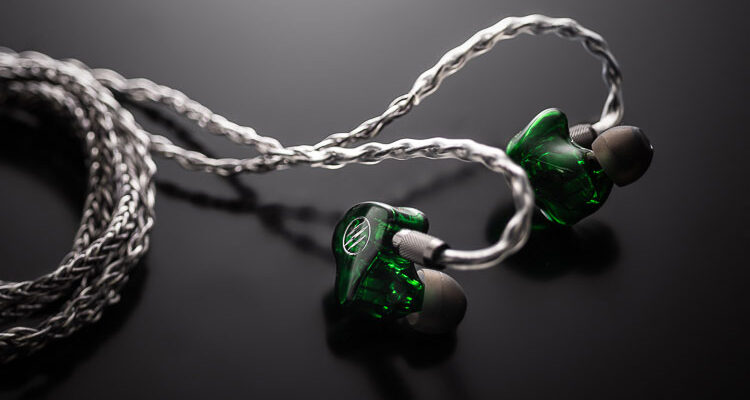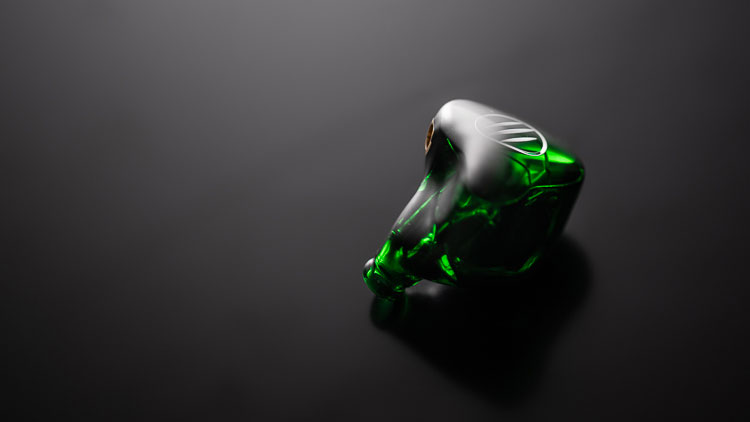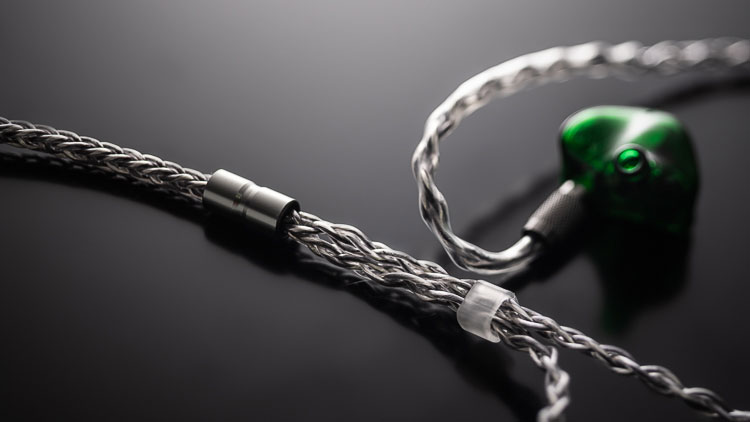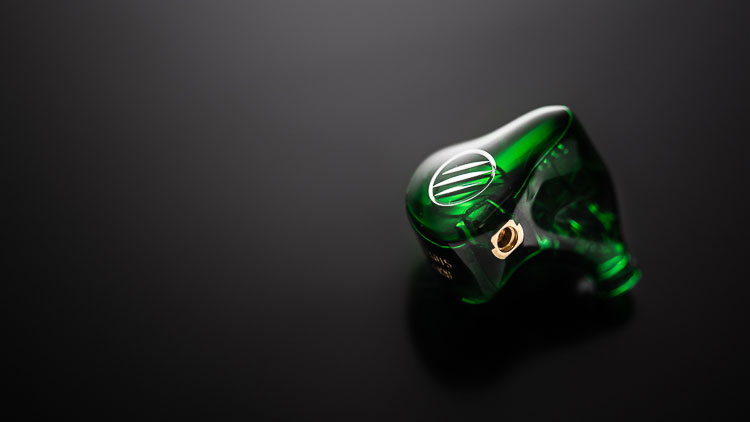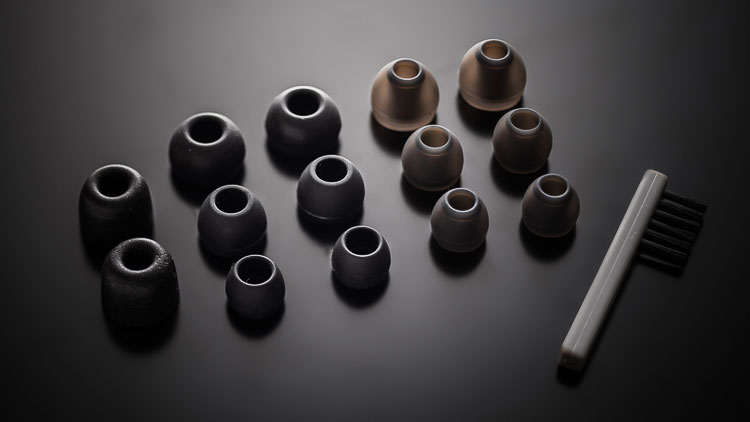The BGVP DM6 is a dual dynamic driver and quad-BA hybrid universal monitor and it sells for just $199 making it a bit of a bargain IEM.
Disclaimer: The BGVP DM6 sent to us is a sample in exchange for our honest opinion. We thank the team at BGVP for giving us this opportunity.
To read more about Linsould supplied products we have reviewed on Headfonics click here.
Note, this review follows our new scoring guidelines for 2020 which you can read up on here.
In clown world, number plates and earphone nomenclatures are one and the same. As a result, the list of earphones and other gear Linsoul wanted to send me for consideration was hard to suss.
Because I understood what both Tin and HiFi were, I started with Tin HiFi T2. And I’m glad I did. The T2/T3 are real performers at their price points.
But with five drivers per side, the DM6 is a crazy geek tour de force. It’s got detachable MMCX cables, a decent stable of accessories, and an unbelievable price.
Tech Inside
Five fingers. Five toes. Five stars. Five alive. I remember when six drivers went for 1300$. Jerry Harvey JH13Pro. What an earphone. And now we get five drivers per side for 199$. Yikes. What’s really cool is that the DM6’s clear shell gives a good window on BGVP’s workmanship. Clean wiring. Clean gluing. Clean bundles. Clean layout. Cool beans.
Build Quality
The DM6’s shell is 3D printed resin. It’s probably as tough as a general custom earphone. It lacks a filter at the sound port, so if you’ve got flaky ear wax, it might be a good idea to douche more often than not.
Honestly, I’m impressed. High volume Chinese factories really are kicking out some high-quality stuff today. The DM6 looks great in its box and up close, even its cable is well tooled and machined with high-quality printing, laminating, and laser engraving. The logo is also nice and understated.
While it looks to be an Oyaide knockoff, the cable plug is heavy, quality stuff. The y-split is tough, tightly machined, and slim. The only thing that feels cheap is the neck cinch. At first, I thought it a scissor-cut bit of heat shrink. It isn’t. But it bends and mushes about a lot and I expect it to wear fast.
The cable stretches a bit but considering that it, like the Tin HiFi T3, fields six strands at the trunk, and three at each branch, that’s hardly a knock.
Stock Cable
Sure, Tin HiFi’s cables are less microphonic, but the DM6’s is hardly a step behind. Touch noise is dull and echoes only barely. I love the slim y-split. The chunky plug is nice, to be sure, but I’ve got to be honest here: it’s too heavy to pair with such a light earphone; I’d much prefer it in a proper headphone, or attached to a really microphonic and super expensive cable.
Being a custom-cum-universal, the DM6 gives you plenty to hang onto when inserting and removing from the ear, which is nice. It is slippery, though, so if your fingers are wet or large, you might have trouble getting the earphones in or out.
Connectors
One thing I expect everyone to worry with are the MMCX connectors. They are tight. Wow. I don’t look forward to trying to remove the cables to photograph the DM6. I may have to go buy some pliers.
Because the DM6 is plastic, it is really light. While soft, the cables have shapes they want to mold into, which moves the earphones around a lot. Between heavy earphone weighing down the cable or vice versa, which is better is a good question. In general, the DM6 strikes a good balance.
Comfort and Fit
So, if you get on with earphones like the Hidizs MS1 and MS4, the DM6 will do you good. It is lighter, and its resin walls won’t get cold in the ear canal. But the DM6 is crazy light. As a glasses wearer, I really dislike the aggressive heat shrink attached to the MMCX plugs that push up my glasses.
I’ve yet to encounter a good ChiFi earphone whose earpieces are comfortable. Sure, the foamies from everyone are okay. But the DM6’s silicon pieces, like the MS1/MS4’s and like Tin HiFi’s are pretty abrasive. The black, wide-mouth bore pieces are my favorite, though are too big for my ears. Abrasive ear pads keep their shape in the canal and therefore sound is less negatively affected. But yikes, I’m reaching for a softer ear tip after I finish this review.
The DM6 sticks out of my ear a little and its flank nudges nicely into my tragus. It fits without feeling too much like I’ve got a large earphone in my ear. Well done.
Accessories and Packaging
Counting the abrasive pads I’m now wearing, the DM6 comes with three sets of black silicon pads, three sets of grey silicon pads, and one pair of BGVP-branded foams. There’s also a loop-less wax brush in there.
The box is pretty cheap and the accessories are just thrown in there, but the foam insert doesn’t smell like a chemical factory, which is really nice. The branding is also simple and bold, though I have no idea what it means. It kind of looks like an artist rendition of a car’s fog lamp coming down a foggy road. I like it, but I have no idea if I like it as an audio marque.
A small annoyance is that the two pieces of literature aren’t the same size and so don’t stack well when replacing into the box, or when folding back up.
Sound Impressions
Tonality and Presentation
The DM6 occupies a zone I’ll define as kind-of-between-the-MS1-and-MS4. It’s generally warm with somewhat bloomy bass, a mildly recessed midrange; in its caboose is a smallish sound stage. Highs roll away kind of quick. Sounds kind of like the MS4, right? Only just. The MS4’s lush vocals and midrange, not to mention powerful bass, really are in another league. That said, the MS4 sounds a bit thick when fed fast, bassy music whereas the DM6 does not.
Staging
I feel that this is the DM6’s biggest miss. Stereo can stretch pretty wide given the right cues but left and right spread tends to settle within the shoulders and the DM6’s y-axis reach is meager. Stage detail doesn’t trip that far forward either. The thing is that the presentation isn’t detailed enough within that narrow band to really put you in the music. Sure, the music is all around you, but positionally, you’re not getting that much separation and directional information to make you feel like a bug on the band’s keyboard. This isn’t Campfire Andromeda.
The DM6 tends to bloom with resiny reverb a bit when fed lots of bass information, but it doesn’t feed black a dull, plastic echo. It just blooms a bit. It’s minor and only barely affects the stage.
Bass
The DM6’s bass is great. It’s raised above neutral by a half a step or so, and it reveals a decent amount of texture. Low frequencies play texture to the center. This is great for fast bass-heavy music, which can really kick in the figurative chest.
It also puts up a decent shoebox style wall around the head. But more nuanced bass cues yield only mild low-frequency stereo detail. Super-duper lows, however, tend to feather really far wide. Because bass sound pressure is medium in both pressure and scope, those feathery super-duper low-frequency details can be hard to hear.
Mids and highs each share a generally narrow stereo image. A high-pressure wide-set bass response might considerably open up the sound. Even with its solid-core low range, the DM6 can draw decent texture the highest of pressure lows. This is enough to render surface-level details from low-voiced guitars, kicks, but it won’t dig up much in the sub-bass.
That is: attack and decay speeds are good, and despite the small amount of bloom in bass reverb, the feel of speed and therefore the head bop-ability of the DM6 is spot on. Texture detail is middling, some being lost to bloom in the upper bass, but most coming through with decent detail in the midbass.
Naturally, if you’re a bass head, more likely than not, the DM6 won’t bop your head much. If you love stereo-detailed lows, you’ll really have to listen up as those details aren’t just dumped in your lap. If you’re in the middle and like warm lows with medium-volume, medium-detail from your bass, the DM6 may do it for you.
Mids and highs
While the midrange is somewhat compressed between a larger than a neutral low-end and a sometimes-sparkly/extended high range, there is very little peaky or warbly information passed to the ear.
Upper mids are mildly veiled, and highs are either bright or muted. Honestly, I’ve never heard an earphone that, when called for, sits on this side of the fence, and when unwanted sits quite like the DM6 does to that side.
Instrument detail in the highs is sometimes high, sometimes low. Pressure from high hats and chimes is pretty high, but general percussion isn’t peaky and doesn’t ring. Female vocals stick out above male vocals, though take the back seat to chimes and ringing electronics.
My guess is that the DM6’s highs end up in a crossfire of sorts, canceling out the squeakiest of high-frequency information, only to squeak a good one when unexpected. A nice effect of this is that sharp, peaky live performances soften up. The flip side is that fine-edged stereo details fade into mere blips and bumps.
Detail
No matter the source, there’s not a lot of really fine stereo detail anywhere in the highs or the lows. Mids, as staid as they are, show mature placement, separation, and stereo details. Perhaps, for this reason, the DM6’s midrange, muted somewhat next to low sound pressure, and a high end whose joint-stereo atmosphere eclipses much of the high midrange, jumps out. I have no words for what’s going on here, but that’s what happens.
So what comprises a compressed midrange when the highs aren’t really elevated and bass isn’t insanely pressurized? Well, that’s a hard thing. Basically, I guess it’s the fact that the only DM6 frequency band with serious X-axis spread is the mids. Because it exists quite alone on the x-axis, the midrange details – if not outright sound pressure – can jump right out.
Matchability
Efficiency
The DM6 reveals plenty of hiss from hissy sources. It’s not as sensitive as a Hidizs MS1 or MS4, but it’s not far off. It reveals a bit too much hiss from a Sony MZ-NH1 – my favorite Hi-MD recorder – when listening to quiet, recordings with great dynamic range.
Naturally, it gets plenty loud from all sources. But, to get the best out of its lows and so as not to get a weird suck-out-and-peak from the upper mids, you’ll probably need a source with a really low Ω / high current output. An iPhone SE is wonderful with it but is bettered barely by the likes of a Cowon Plenue D2. An Astell & Kern SPM1000M hisses a bit too much in my opinion.
Select Comparisons
Hidizs MS1
The MS1 is brighter, wider, and not as smooth when transitioning from mids to highs. The DM6 is warmer but in no way as warm as the MS4 nor as bassy. Depending on the genre and source (hissy or not), I might prefer the MS1 to the DM6, but in general, I prefer the higher bass pressure and general warmth of the DM6.
Performance
At 199$, the BGVP DM6 battles it out with a lot of really really good earphones. The Hidizs MS4, which starts at just 20$ more, is, in my opinion, a better earphone in every area but looks and clarity when bass-heavy music gets fast and furious.
The DM6 is good. But it’s not warm in the way I want/need a warm earphone to be. And its bass, while low-hitting, is neither as taut-edged nor as loose as I personally need it to be in order to rally big atmosphere or figuratively define instruments or environment native to the recording.
It’s midrange, which is atmospheric, is great, but where mids and highs connect, things go a bit grey. The DM6 is a good-sound earphone. But it pussyfoots all basic aspects, whilst simultaneously nailing them all.
Our verdict
The DM6 does nothing wrong at all in the scheme of things. However, considering the audio landscape, where even a 50$ Tin HiFi T2 rocks my socks off, the DM6 has more exciting competition both down and up the ladder from it. BGVP: picking a firm plotline might be a good idea.
DM6 Specifications
- Driver(s) / type: 5 balanced armature (Knowles 22955+30017)
- Sensitivity: 122dB SPL/mW
- Impedance: 20Ω
- Frequency response: 10Hz – 40KkHz
- Distortion Rate: <0,5%
- Channel Difference: <1dB
- Rated Power: 5mW
- Cable length: ~1,2m

